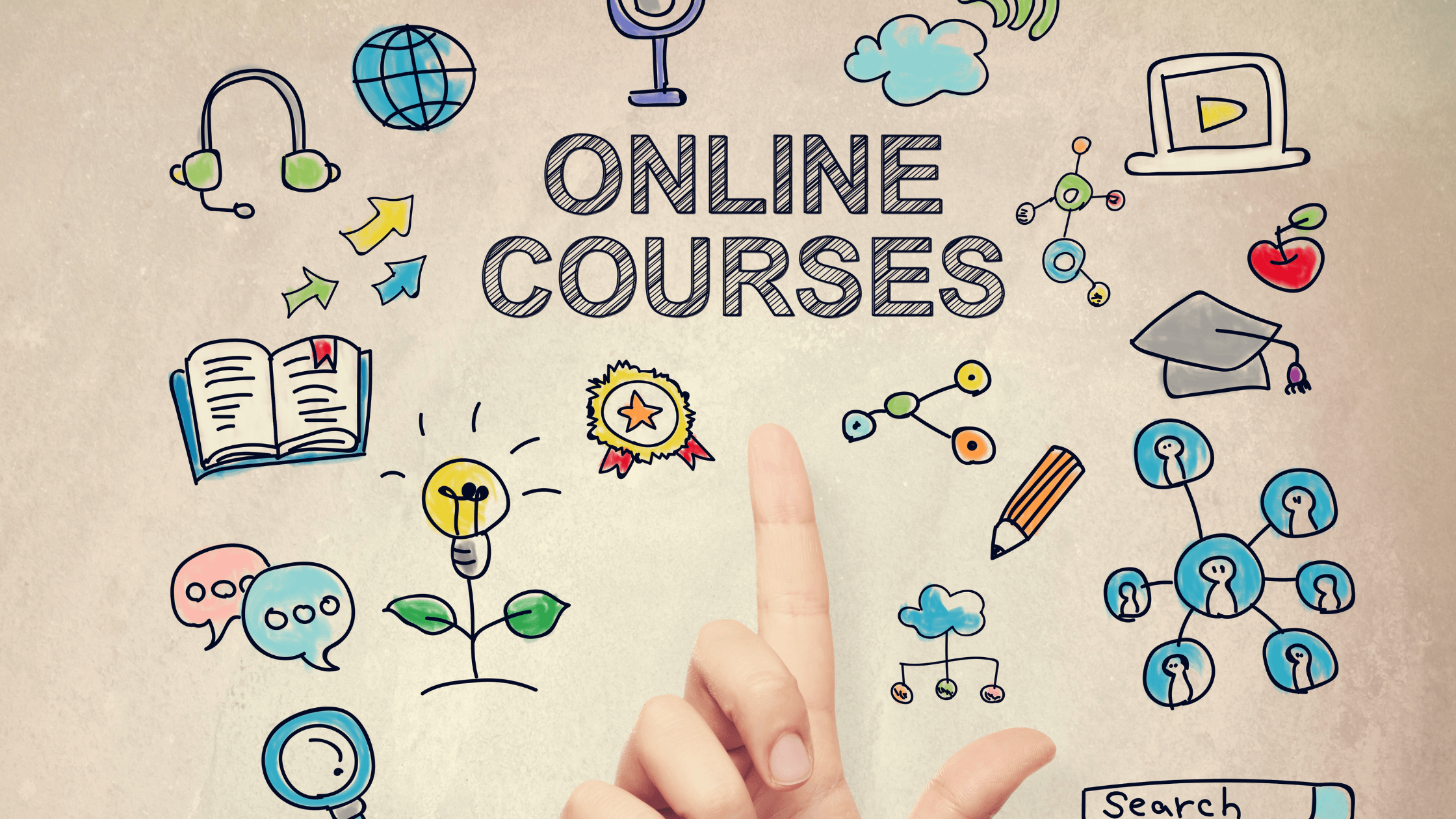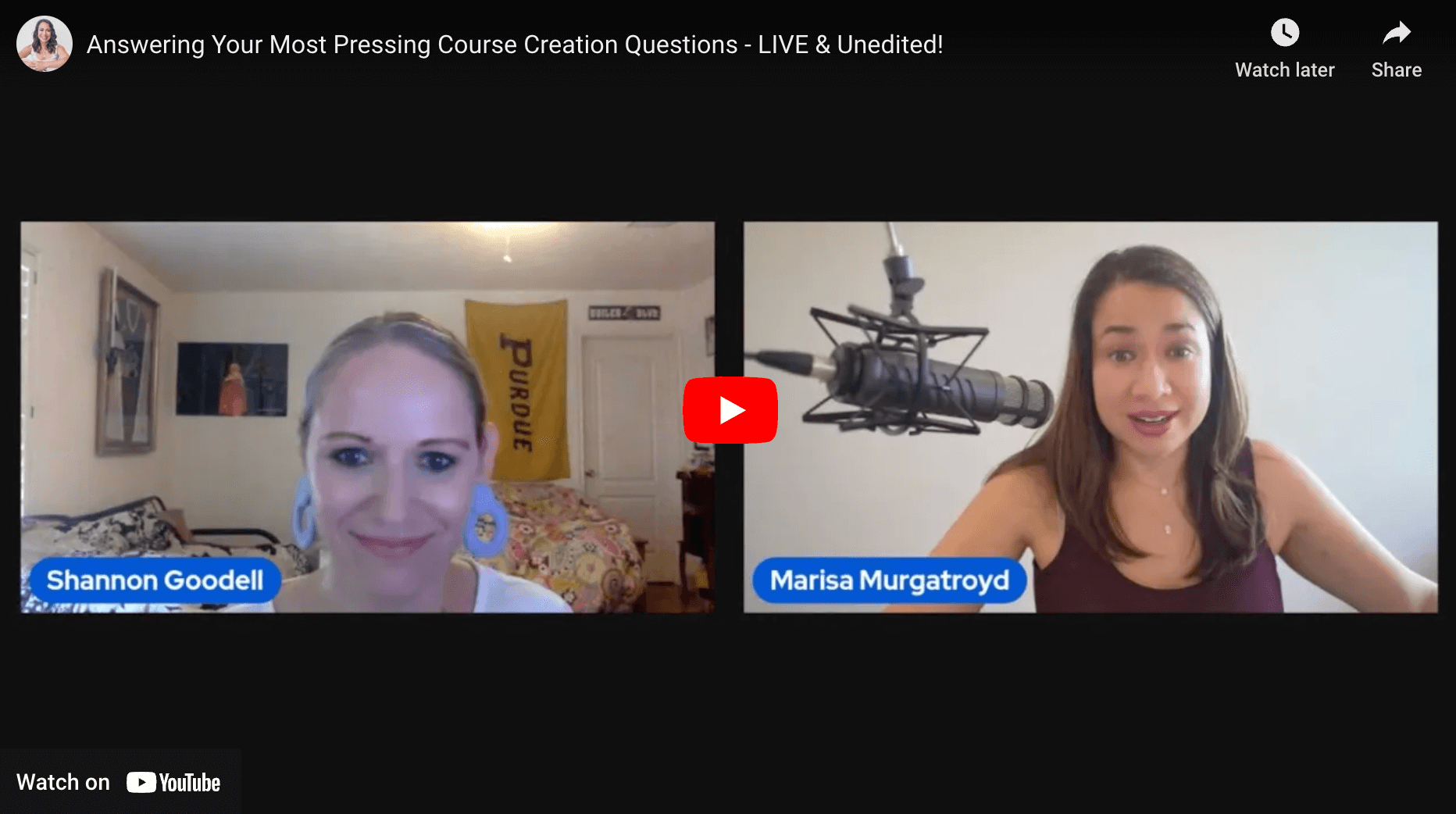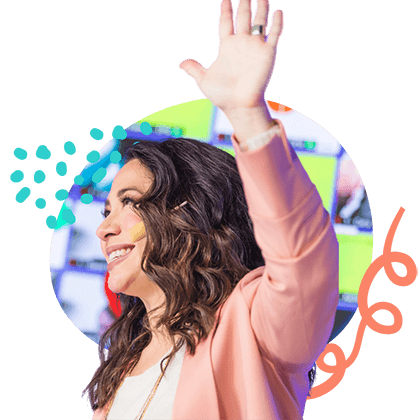What if I told you the key to unlocking your full potential was as simple as discovering and embracing your learning style?
It’s true.
The VARK model tells us there are four types of learning styles:
- Visual
- Auditory
- Reading and Writing
- Kinesthetic
And in this post, I’m going to walk you through each one.
Ready to revolutionize the way you absorb information and make learning a breeze?
1. Visual Learning: Unleash Your Inner Artist for a Photographic Memory
Visual learning is a feast for the eyes.
Do you easily read maps, decipher graphs, or recall a scene from a movie in striking detail?
If this rings a bell, you might just be a visual learner!
So, let’s delve into some lesser-known insights, benefits, and tips for this learning style to help you harness your untapped potential.
Unconventional Insight for Visual Learners
One secret weapon for a visual learner is using mind maps.
These visual representations can boost memory retention by organizing complex ideas into simple, memorable images.
For example, imagine you’re studying the solar system.
Instead of writing a list of planets, create a mind map with the sun at the center and each planet connected to it.
Use colors and shapes to represent each planet’s unique features.
The result?
An unforgettable image that stays with you long after you’ve closed your textbook.
Unexpected Benefit of Visual Learning
Accelerating your learning with visual aids isn’t just about making things look pretty. It’s about creating stronger associations in your brain.
Imagine embarking on the exciting journey of learning a new language.
Rather than merely memorizing a long list of vocabulary words, consider pairing each word with a vivid image that embodies its meaning.
For example, if you’re a student learning the Spanish word for “sun” (sol), you could visualize a bright, golden sun shining radiantly in a clear sky.
By creating these mental images, you’re establishing neural connections that enable you to recall information more easily.
This innovative approach not only makes learning more engaging but also significantly improves your ability to retain and retrieve new concepts.
Tips for Visual Learning
To fully harness the power of visual learning and make the most of your unique abilities, consider implementing these practical techniques:
- Watch videos and animations: Supplement your study materials with educational videos and animations that illustrate concepts.
- Try color coding: Use different colors to categorize information, making it easier to spot patterns and connections.
- Switch to visual note-taking: Transform your notes into diagrams, flowcharts, or doodles to help you better understand and remember the material.
- Incorporate image flashcards: Create flashcards with images or illustrations that represent key concepts or vocabulary words.
- Take advantage of online tools: Use platforms like Canva to create visually appealing presentations and study materials.
With these tips in mind, you’re on your way to mastering visual learning.
Now, let’s dive into the world of auditory learners and explore how they can amplify their learning experience.
2. Auditory Learning: Turn Every Sound into a Symphony of Knowledge
For those who find their minds dancing to the rhythm of spoken words and melodies, auditory learning presents an immersive way to absorb information.
These learners shine in areas that emphasize listening, such as language learning, music, and verbal communication.
If you often replay conversations in your head or find yourself swaying to catchy tunes, it’s time to celebrate your auditory learner abilities.
So, let’s embrace your unique learning style and read on to unlock its full potential!
Unconventional Insight for Auditory Learners
Have you ever heard of ASMR (Autonomous Sensory Meridian Response)?
No?
Well, let me introduce you to this fascinating phenomenon.
ASMR is that tingling, soothing sensation some people experience when they hear certain sounds.
Picture yourself listening to the soft sound of raindrops falling on a windowpane, or the calming hum of a cat’s purr — these are examples of ASMR trigger sounds.
For auditory learners, ASMR can be a powerful tool to enhance focus and relaxation.
By incorporating these sounds into your study sessions, you can create an immersive, environment that helps you retain information more effectively.
So, next time you’re studying, give it a whirl — it might just give you the extra edge you need!
Unexpected Benefit of Auditory Learning
Auditory learners possess a unique ability to conquer any subject by transforming it into a musical or rhythmic masterpiece (of sorts).
Remember the catchy “Schoolhouse Rock” videos from your childhood?
They turned complex subjects into simple, memorable tunes that you can’t help but hum throughout the day.
So, why not tap into your inner musical genius and create your own songs or rhymes to grasp essential information?
You’ll be surprised at how quickly you can learn new concepts when you put them to a catchy beat!
Tips for Auditory Learning
An auditory learner can enhance their learning experience with these invaluable tips:
-
- Create mnemonic rhymes: Create your own rhymes or jingles to remember key concepts or facts.
- Record your own summaries: After completing a chapter or topic, record a brief summary in your own voice.
- Experiment with binaural beats: Listen to binaural beats while studying to potentially enhance your focus and concentration.
- Explore podcasts and audiobooks: Tune into educational podcasts or listen to audiobooks on your chosen subject.
- Jump into discussion groups: Participate in group discussions, debates, or study groups to help reinforce your understanding.
Armed with these auditory learning techniques, you’ll be well on your way to turning every sound into a learning opportunity.
Next, let’s explore how reading and writing learners can unlock the limitless potential of their learning style.
3. Reading & Writing Learning: Unlock the Power of Words for Limitless Learning Potential
For those who find themselves captivated by the written word and the power of language, reading and writing learning is an enchanting journey.
These learners flourish in areas that require written communication, critical thinking, and literary analysis.
So, if you become spellbound by a captivating novel or find solace in weaving your thoughts into words, then you’re likely a reading and writing learner.
Are you ready to unlock the endless possibilities of your learning style…
Unconventional Insight for Reading & Writing Learners
Expressive journaling isn’t just for pouring your heart out — it can also boost comprehension for reading and writing learners.
By reflecting on what you’ve learned through journaling, you’re more likely to retain and internalize new information.
So, next time you finish a chapter or a lesson, take a few moments to jot down your thoughts and insights.
You’ll be surprised by the results.
To delve deeper into the numerous benefits of expressive journaling, check out this paper from the Education Resources Information Center.
Unexpected Benefit of Reading & Writing Learning
Diving into the world of text isn’t solely about acquiring new knowledge.
In fact, research confirmed you’re also giving your cognitive abilities and critical thinking skills a fantastic workout.
When you engage in analyzing and interpreting complex ideas, you’re essentially fine-tuning your brain to think more deeply, creatively, and strategically.
For example, imagine yourself dissecting a thought-provoking high school essay on the impact of social media on society.
As you read and write about this topic, you’re not only learning about various perspectives.
You’re also strengthening your ability to critically evaluate arguments and synthesize information.
In turn, this enhances your problem-solving and decision-making skills, which are invaluable assets in every aspect of life.
So, go ahead and explore the wonders of reading and writing. But before you do, let’s explore some tips…
Tips for Reading & Writing Learners
Maximize your reading and writing learning style by incorporating these simple yet effective strategies into your study routine:
- Experiment with different writing techniques: Try summarizing, paraphrasing, or creating outlines to reinforce your understanding of the material.
- Use analogies and metaphors: To better understand complex ideas, try creating analogies and metaphors to relate them to simpler concepts.
- Create your own study guides: Combine what you’ve learned into a personalized study guide that highlights key concepts and ideas.
- Join book clubs: Engage in discussions with others who share your passion for reading and writing.
- Collaborate with others: Learn from the perspectives of others by pairing up and taking turns to write a few sentences or paragraphs on a topic.
By embracing these reading and writing techniques, you’ll be on the path to unlocking the power of words for endless learning potential.
Finally, let’s discover how kinesthetic learners can dance their way to success with movement-based learning.
4. Kinesthetic Learning: Dance Your Way to Success with Movement-Based Learning
For those who find their minds awakening with every movement and physical activity, kinesthetic learning is an exhilarating way to grasp new concepts.
These learners flourish in hands-on experiences, excelling in areas such as sports, dance, and even science experiments.
So, if you catch yourself tapping your foot or fidgeting during study sessions, it’s time to embrace your kinesthetic learner prowess.
Get ready to embark on a learning journey fueled by motion and discovery!
Unconventional Insight for Kinesthetic Learners
For kinesthetic learners, an often-overlooked approach to learning is through role-play.
By stepping into the shoes of a character, person, or concept, you can gain a deeper understanding of the subject matter and make it more relatable.
For example, if you’re a history student, why not act out a historical event or portray a famous figure from that time period?
Of course, role-play doesn’t stop with history.
You can incorporate this approach into virtually any subject.
Studying biology?
Act out the process of photosynthesis as a plant, taking in sunlight and converting it into energy.
Delving into literature?
Transform yourself into a character from a novel or play, experiencing their emotions and conflicts firsthand.
Not only will you have a blast, but it also allows you to connect with the material on a more personal level.
Unexpected Benefit of Kinesthetic Learning
By engaging in physical activity, you can develop muscle memory and achieve mental clarity.
Think of a dancer who can execute complex choreography without consciously thinking about each movement — that’s muscle memory at work!
By integrating movement into your learning process, you’re not just exercising your body, you’re also training your brain to retain new information.
Tips for Kinesthetic Learners
Exercise can improve focus and retention for kinesthetic learners, so make the most of movement in your study routines:
- Become active whilst studying: Try walking or pacing while you read or listen to audio material. This can help you stay engaged and focused.
- Utilize active study breaks: Re-energize your mind and body by stretching, yoga, or even dancing during your break.
- Try hands-on activities: Engage in practical exercises, simulations, or experiments related to the subject you’re studying.
- Incorporate props and tools: When studying, use physical objects or tools related to the subject to help reinforce your understanding.
- Use interactive apps: Use apps, games, or online resources that encourage physical interaction and engagement with the material.
By incorporating movement, you’ll be well on your way to mastering kinesthetic learning and achieving success through physical activity.
Unlock Your Full Potential With These Learning Styles
And that’s a wrap!
By understanding and embracing the different types of learning styles, you can unlock your full potential and excel in your chosen field.
So, go forth, expand your knowledge and let us know your individual learning style in the comments below.
But before you go…
I’ve been showing people — from all walks of life and every industry under the sun — how to create a successful online course that works with rather than against the way people want to learn…
And now it’s your turn!
Which is why I wanted to invite you to my FREE Course Creation Masterclass — How to Use Your Knowledge, Skills or Passions to Create a High-Impact Online Course
In just about 90 minutes, you’ll discover the 3 secrets to create & launch (yes, launch!) an online course or program… in no time at all.
So go ahead and save your seat or share the Masterclass link with someone who could use it 🙂



























Leave a Comment